Do you have what it takes to become an Air Force Pararescueman?
If you think you do, then you will have to live up to their motto, “These Things We Do, That Others May Live.”
These dedicated Air Force Combat Medics are willing to lay it all on the line to help their military brethren and others that have found themselves in harm’s way.
Air Force tactical rescue and recovery specialists think nothing of going behind enemy lines during wartime to rescue an aviator that has ejected from an aircraft, or braving a hurricane in peacetime to help rescue those that have been caught in its path.
Related Article: DEVGRU: Selection, Squadrons, Gear, Notable Missions, And More
During the training phase of this job, one will learn to become part combat airman and part emergency medical technician.
These are jobs that are typically hard enough to do on their own let alone in combination with one another while under fire.
The training is hard, and extreme discipline is demanded, but anyone that does this Air Force Job will tell you they have never been prouder than the moment that they were allowed to wear the ‘maroon beret’.
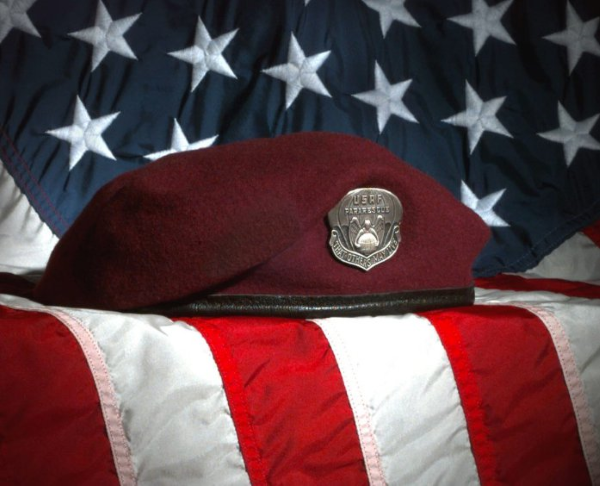
Those that wear it become part of a select brotherhood.
The Pararescue brotherhood is respected highly by not only other Air Force members but also by other military branches and those in the civilian community as well.
Jump To A Section
Brief History of PJ’s
In 1943, some 20 soldiers were forced to bail out of the disabled C-46 transport aircraft that they were traveling in.
The area where these troops bailed out was in a super-remote jungle near the China-Burmese border.
There was no way for the Army to get to these men and help the injured in a timely manner because of that extremely remote location.
This meant the only way to get these men the attention they badly needed was by parachute drop.
Army Lieutenant Colonel Don Flickinger and two Army Corpsman volunteered for the task.
Related Article – Air Force Aerospace & Operational Physiology (4M0X1): Career Details
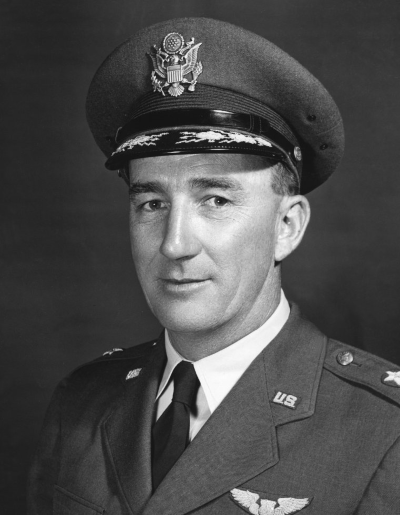
Once they dropped into the crash area, they tended to the needs of the sick and wounded until a rescue team finally arrived almost a month later.
This event made those in charge of the Army Air Force keenly aware of the immediate need to create a highly specialized rescue force.
The new rescue force would be tasked to quickly get to downed airmen and soldiers in situations like this one.
This laid the foundation for what is known today as an Air Force Pararescueman (PJ).
This Air Force job was officially born as part of the Army Air Corps back in March of 1946.
That makes it older than the Air Force itself (established in 1947).
Since that time, “PJs,” “Maroon Berets,” or “Rescue Rangers,” as they have been affectionately called over the years, have been responsible for saving thousands of downed aircrew and soldiers’ lives.
PJs are also by far the most decorated enlisted airman of all time.
Related Article – Green Berets Vs. Army Rangers: 5 Major Differences
They have played key roles in rescues in every major and minor conflict from Korea to modern-day Iraq and Afghanistan.
PJs have even helped rescue civilians when natural disasters have struck and supported NASA space capsule splashdowns.
Through all of the major and minor conflicts that the United States has been involved in, Pararescuemen are by far the most decorated of all Air Force enlisted personnel.
USAF Pararescue Perquisites and Qualifications
To become an Air Force Pararescueman (PJ) one has to be both physically and mentally fit to serve.
Even the prerequisites and other qualifications to enter into the Pararescue pipeline are demanding.
They consist of:
- Must be between the ages of 17 and 39
- Be a High School graduate or have a GED
- Have normal color vision and depth perception
- Have best eye vision of 20/70 or better, correctable to 20/20
- Achieve a minimum ASVAB score of 44 in the General category
- A minimum score of 60 on the PJ selection model based on the Tailored Adaptive Personality Assessment System
- Be physically fit enough to handle aircrew, parachute, and marine-diving duties
- Completion of a current National Agency Check, Local Agency Checks, and Credit Checks
- Completion of a current Single Scope Background Investigation (SSBI) that leads to the ability of the Airman to obtain a secret or higher-level security clearance
- Successful completion of 7.5 weeks of Air Force Basic Military Training – Joint Base Lackland San Antonio, Texas
Related Article – 20 Health Conditions That May Disqualify You From Military
Pararescue Training
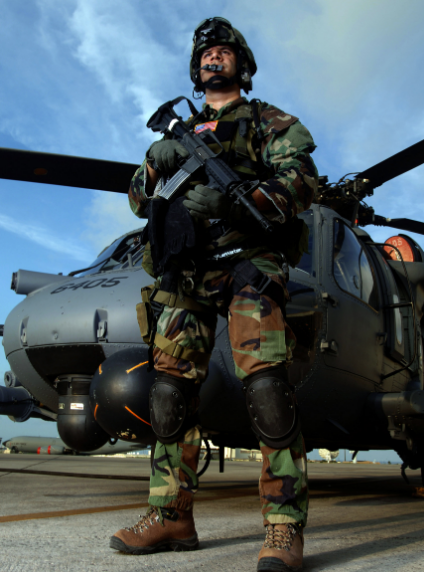
What makes being a ‘PJ’ so tough is that they are part Special Forces soldiers and part Paramedics.
They also have to know how to parachute, operate in water, survive in the wild, and do other required PJ tasks such as rappelling from helicopters.
That’s why it takes almost two years of training to become a certified Pararescueman.
This is one of the longest Special Forces training regimens in the world.
It also explains why this Air Force career training path has one of the highest attrition rates in the entire U.S. special operations community averaging 80%.
For the layman, that means that for every 100 men (or women) that attempt to become Para Rescue, only 20 of them will successfully complete the training pipeline.
Related Article – Air Force Aerospace Medical Service (4N0X1): Career Details
For most Air Force enlisted personnel, the rough stuff is over after basic training ends.
For a PJ, the end of basic training means their physical and mental toughness training is just beginning.
The next phase of training for prospective Pararescuemen is what’s known to PJs as “The Pipeline.”
Here is a list of all of the specialty training courses that an Airman must successfully complete to earn the title of PJ:
Special Warfare Candidate Course: Joint Base Lackland – San Antonio, Texas
This is an indoctrination-type course that lasts 7 weeks long and is conducted at Lackland AFB.
The PJ pipeline candidate will undergo extensive physical training during this period to prepare them for the PJ ‘Initial Fitness Test’ (IFT).
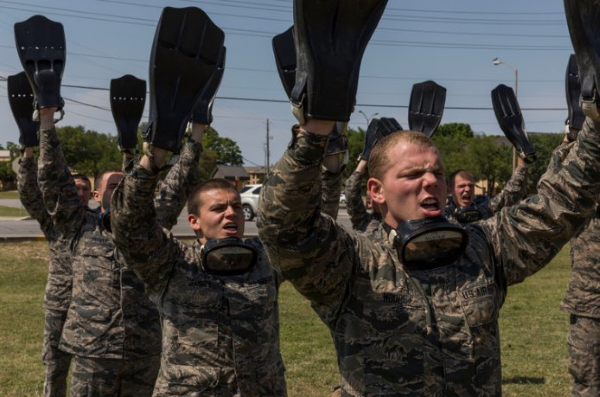
Related Article – Army Combat Medic Specialist (MOS 68W): Career Details
This training includes extensive amounts of swimming, rucksack marches, calisthenics, obstacle course running, and other physical activities.
During this course, the candidate will also be taught dive physics, metric manipulations, medical terminology, dive terminology, CPR, and the history of military and Pararescue operations.
They will also have to qualify on several different weapons that PJs typically use.
To complete the IFT and qualify for further PJ training the enlisted Pararescue pipeline member must to all of the following in under 2 minutes each:
- Complete 8 pullups
- Complete 50 situps
- Do 40 pushups
Then they need to complete a 1.5-mile run in under 10:20, a 500-meter surface swim in under 15:00, and two 25-meter underwater swims that are pass or fail tests.
If you pass, you’ll get to move on to more strenuous training.
Special Warfare Assessment and Selection Course: Joint Base Lackland – San Antonio, Texas
This course even further expands upon the physical training that a prospective PJ goes through before being allowed to continue on in the pipeline.
It’s a course that focuses more on group physical training extremes as opposed to individual physical training.
Related Article – Green Beret Vs. Navy SEAL
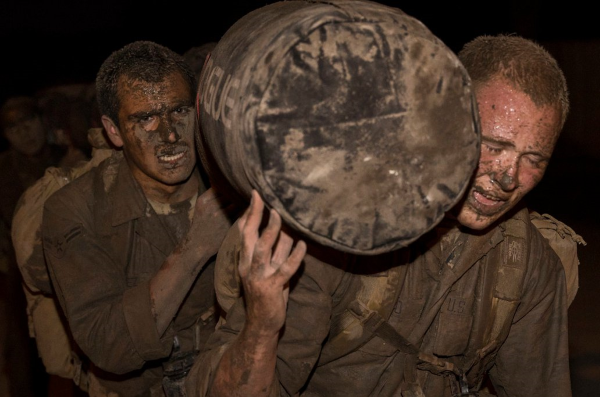
It also includes the famous “hell night,” which is a 20-hour day where instructors push the teams of PJ candidates to their mental and physical limits.
The physical demands placed on the students during hell night combined with sleep deprivation are designed to reproduce the stressful environment that comes along with the chaos of war.
Successful completion of this course is a prospective PJ’s ticket to ride the rest of the pipeline.
Air Force Special Warfare Pre-Dive Course: Joint Base Lackland – San Antonio, Texas
It used to be that Air Force Pararescue trainees spent 6 weeks at the Special Forces Dive Course but now this is broken up into two segments, one that lasts 4 weeks followed by another 4-week course.
The first of which is an indoctrination course, which involves an assessment where you’ll be required to prove you can continue on the pipeline.
The second 4 weeks at Lackland is the Special Warfare Pre-Dive Course. You’ll receive intense physical fitness training and more importantly, water confidence training that will help you success in dive school.
Related Article: Air Force Ranks And Pay
Combat Dive School: Panama City, Florida
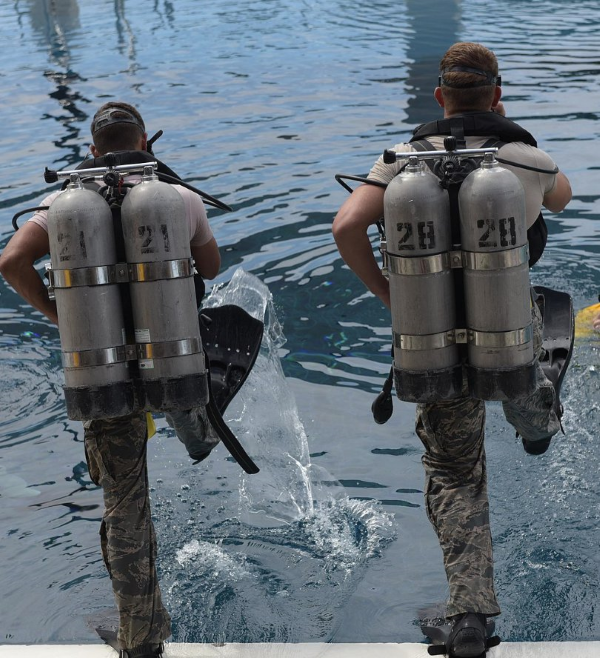
This 5-week course expands greatly on what was learned at the Air Force Special Warfare Pre-Dive Course.
It is extensive diving and physical training designed to turn the Pararescue trainee into a proficient diver and swimmer that is able to handle all sorts of waterborne personnel recovery tasks.
It includes training for surface/sub-surface infiltration swims, open/closed circuit diving, and underwater search and recovery.
The training ends with a waterborne field training exercise (WFTX).
Navy Underwater Egress Training: Pensacola NAS, Florida.
This is a single-day course that teaches prospective Pararescue candidates how to safely get out of an aircraft that has ‘ditched’ itself in the water.
Personnel will actually perform an underwater egress from a simulated water landing event.
Related Article – How To Get Into The Air Force Academy
Army Airborne School: Fort Benning, Georgia
During this 5-week course, Pararescue pipeline members will be taught basic parachuting skills and how to effectively infiltrate a target area by static line airdrop.
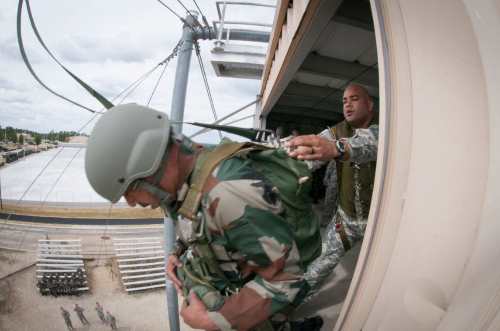
It consists of three phases that are known as ground operations week, tower week, and jump week.
By the end of jump week, the Pararescue candidate will have also made 5 actual parachute jumps.
Those who make it through this training are given a basic parachutist rating and also are allowed to wear the coveted parachutist’s wings that go along with that certification.
Related Article – Navy Vs. Air Force
Military Free-Fall Course: Yuma Proving Ground, Arizona & Jamul. California
This is a 4-week course that advances a PJ’s parachuting skills and teaches them how to do freefall parachuting (HALO) using a high-performance ram-air canopy.
During this time, a student will complete some 30 freefall jumps including night jumps, supplemental oxygen jumps, and jumps in full battle gear.
Air Force Basic Survival School (SERE): Fairchild AFB, Washington
This is a 3-week course that teaches Pararescuemen how to survive in all different types of climates.
The training includes remote area survival techniques using minimal equipment.
It also includes advanced SERE (survive, evade, resist, and escape) training.
Modernized Pararescue Provider Program, Lackland AFB, TX
Back to Lackland for 39 weeks of training in emergency medical care.
Along with qualifying you as a PJ, you’ll become a nationally registered EMT and Paramedic.
You’ll learn fundamental combat medic skills along with advanced courses in:
- aeromedical physiology
- dive physiology
- casualty evac
- combat casualty care
- K9 casualty care
- and chemical, biological, radiologicl, and nuclear response care
It is the heart and soul course of Pararescue training, which is responsible for saving many lives over the years.
Topics covered include pharmacology, performing minor field surgery, handling combat trauma, advanced airway management, and proper military emergency evacuation techniques.
Upon successful completion, an EMT-Paramedic certification is awarded to the Pararescue candidate through the National EMT-Paramedic Registry.
Pararescue Apprentice Training: Kirtland AFB, New Mexico
This is the final course in Pararescue training and lasts 22 weeks.
Once the 39-week EMT course has been completed, a Pararescuemen will then move on to this more advanced emergency medical course.
This 22-week course teaches you how to apply what you’ve learned under stressful conditions. You’ll learn the combat skills you’ll need when operating in a war zone.
Related Article – Coast Guard Rescue Swimmer: Pay, School, Training, And More
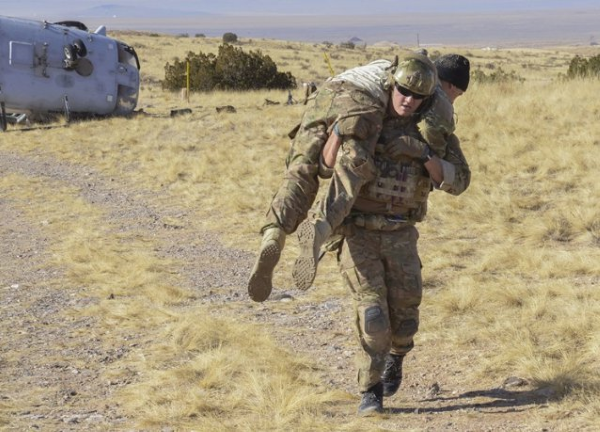
It combines the skills a Pararescue trainee learned in the EMT courses with such things as mountaineering, advanced combat tactics, advanced parachuting techniques, helicopter insertion/extraction, and multiple weapons qualifications.
Once a Pararescue candidate completes this course, they are officially awarded the ‘Maroon beret’ signifying they are now a qualified Air Force Pararescueman.
Related Article – Army Operating Room Specialist (MOS 68D)
Other Training Requirements
There very well could be more forms of training required of an Airman depending on what their specific Pararescue assignment or mission is.
There will also be mission-specific on-the-job training required once an airman gets to their permanent duty station.
Any Air Force Pararescueman will also be expected to meet other periodic training requirements throughout their entire enlistment.
The training is intense and demanding, but those that get through it will never feel better mentally and physically in their lives.
They will also know the bond of what it’s like being elite tactical rescue and recovery specialists.
More on Pararescue training can be seen on these YouTube videos:
Indoctrination Training
Overall Training
Related Article – CIA Special Activities Division (SAD): 12 Things You Never Knew
Pararescue vs. Combat Controllers
Anyone who passes the training to do either of these Air Force Special Forces disciplines will truly be a member of an elite special tactics squadron.
One must, however, be aware that the stated goals and objectives of each of these Air Force disciplines are vastly different.
Combat controllers rarely if ever perform as combat medics, as they are not trained for this.
Their primary mission is to coordinate combat activities of those on the ground with aerial platforms overhead.
This would include such things as calling in airstrikes and directing Pararescue teams to where they are needed.
PJs, on the other hand, are primarily concerned with doing whatever it takes to complete successful rescue and recovery operations.
This includes rescuing downed airmen and soldiers and performing stabilizing medical procedures on them if necessary.
Related Article – Air Force Combat Controller – CCT (1C2X1): Career Details
PJ Weapons and Gear
A fully outfitted Pararescueman can carry gear that weighs well in excess of 100 pounds.
What they actually carry fully depends on the rescue scenario that they are getting into.
Among the main items in a basic CSAR (combat search and rescue) kit are:
- Body armor
- M-9 pistol
- M4 carbine lightweight assault rifle
- Extra mags
- Radio
- Personal flotation device
- Mich helmet with night vision goggles
- Portable jaws of life
- Enough medical supplies to take care of a multi-system trauma patient for up to 72-hours
You can see a full interview with an active-duty USAF PJ below:
He discusses everything he brings along with him for a typical mission.
Related Article: Navy SEAL Weapons And Gear
Frequently Asked Questions
What is Pararescue in the Air Force?
Sometimes called “PJs,” Air Force Pararescue is a special operations force that provides rescue, recovery, and medical services in combat and humanitarian missions. Their motto is “That Others Might Live.”
How much do Air Force Pararescue get paid?
Like all USAF members, PJs are paid a base salary according to rank and time in service. However, they also may receive bonuses, including dive pay, flight or jump pay, proficiency pay, hazardous duty pay, as well as retention bonuses.
How long is Air Force Pararescue training?
PJ training is one of the most rigorous in the U.S. military and can take up to two years to complete. It includes Basic, physical training, dive school, airborne training, survival training, and emergency medical training.
Do PJs deploy with Navy SEALs?
Air Force PJs provide rescue and medical services during dangerous missions and frequently deploy with the U.S. Navy SEALs and U.S. Army Special Forces.
Is it hard to become a USAF Pararescue?
Joining the Air Force PJs is quite challenging; and over 80 percent of those who try out for it don’t make the cut.
PJ’s in Summary
This is definitely one of the most demanding and selfless jobs in the entire military. The training is long, intense, and difficult, but it lays the foundation for one of the most important jobs in the Air Force.
A well-trained Pararescueman is a downed aviator or other wounded soldier’s best friend.
Those who wear the Maroon beret also set themselves up for a lucrative career in the medical field with some more course work or they can immediately go to work as well-paid EMTs or Paramedics.
References:
https://www.airforce.com/careers/detail/pararescue
https://www.airforcespecialtactics.af.mil/Who-We-Are/ST-Pararescue/
https://www.af.mil/About-Us/Fact-Sheets/Display/Article/104515/pararescue/
- 5 Worst Jobs in the Air Force - June 20, 2024
- 4 Steps For Visiting An Air Force Recruiter Near You - June 19, 2024
- Air Force Safety Specialist (1S0X1) - June 19, 2024

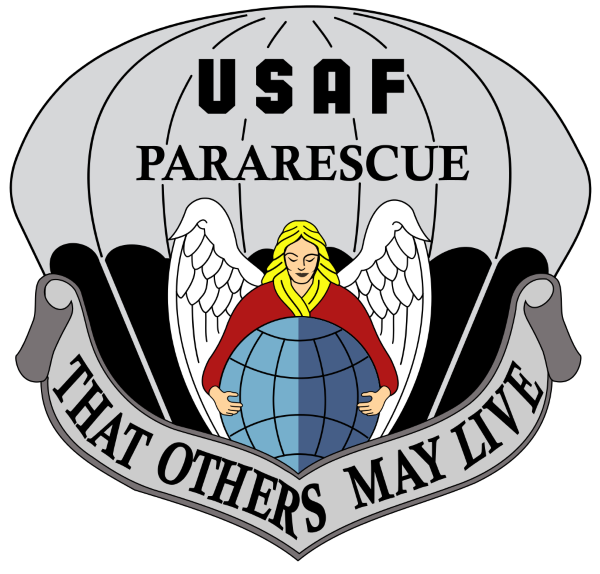

“Purple beret” earned as a PJ. Maroon, not purple. Need to get your facts right if your going to say you fact check all your material.
Sorry about that, Rob. Just got it fixed up, thanks for pointing it out.